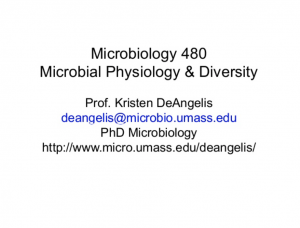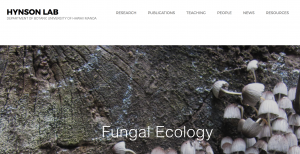On January 24, 2017 we held a 90 minute symposium titled “Microbiology of the Built Environment: Implications for Health and Design” at the National Council for Science and the Environment Conference (NCSE) conference in Washington, DC. Thank you to the Alfred P. Sloan Foundation for sponsoring this event. The NCSE conference integrates science and policy, …
Coming up in June (June 1-5) in New Orleans. ASM Microbe 2017, the Annual meeting of the American Society for Microbiology. For more information see https://www.asm.org/index.php/asm-microbe-2017 The meeting should be very good. Hotel deadline is May 17. For sessions on some topics of interest see Antimicrobial Agents and Infectious Diseases Applied and Environmental Science Clinical and …
The disease-causing organisms Burkholderia multivorans, B. cepacia, genomovars of the B. cepacia complex (BCC), as well as an unclassified species of Burkholderia, and its relatives Ralstonia pickettii and R. insidiosa account for 60% of the bacterial isolates obtained from the filtrated water system on board the International Space Station (ISS). Members of these genera can …
OK – full blown mushrooms are not microbes. But they are fungi. And a lot of fungi are microbial. So I am ignoring the multicellular nature of these mushrooms here – after all – nobody’s perfect. Anyway – thought this might be of interest to those thinking about fungi in the built environment. Source: UPDATE: City …
Quick post here just to alert people to this story about a drug resistant Candida auris fungus variety showing up more and more. Of relevance to the microbiology of the built environment crowd is the following quote: The fungus can be passed between people or through the environment from such things as hospital equipment, says Dr. Tom …
Federico Lauro, Chris Mason and I (and a few others by now) are looking for editors for a Frontiers Special Topic on Citizen Science in Microbiology. It is important to us that we assemble a diverse panel of editors before we start inviting submissions! We are especially interested in making sure that women and people …
My course slides are updated for 2017 with a new lecture on acellular life. Lecture 01 (3-21-2017) slides from Kristen DeAngelis Lec02 phylogeny (3-23-2017) from Kristen DeAngelis Lecture 03 (3-28-2017) slides from Kristen DeAngelis Lecture 20 (4-20-2017) slides from Kristen DeAngelis Lecture 22 (4-27-2017) slides from Kristen DeAngelis Lecture 23 (5-2-2017) acellular life slides …
Why use Bracken instead of Kraken? by Jennifer Lu and Steven Salzberg Kraken is a very fast, accurate program for classifying metagenomic sequencing data. It takes a set of reads, contigs, or other DNA sequences and for assigns a taxonomic label (species, genus, etc.) to each one. Last year we discovered that some people were …
When I first started working in Dr. Jonathan Eisen’s lab my junior year of college, I was assigned a pretty open ended task. Swab something from the built environment and see what grows. This being the first time I was actually doing research, I was incredibly excited to go out and swab the world. My …
The Aerobiota of the Mauna Loa Observatory (MLO), Hawai’i project will fully characterize the fungal and bacterial communities captured over the last decade by air filters at the MLO on the island of Hawai’i, one of the most remote locations on earth. It might seem odd to call a weather station in a remote …







